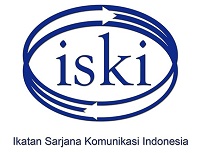Konsep Waktu: Perspektif Komunikasi, Islam, dan Anak TK
Abstract
Keywords
Full Text:
PDF (Bahasa Indonesia)References
Devito, A. Joseph. 1997. Komunikasi Antar Manusia; Kuliah Dasar. Terj. Agus Maulana. Jakarta: Professional Books.
Gudykunst, William & Young Yun Kim. 1992. Communicating With Strangers; An Approach to Intercultural Communication (second edition). New York: McGraw-Hill.
Liliweri, Alo. 2004.Dasar-Dasar Komunikasi Antarbudaya. Yogyakarta: Pustaka Pelajar.
Lewis, Richard D. 1996. Menjadi Manajer Era Global; Kiat Komunikasi Bisnis Lintas-Budaya. Bandung: Remadja Rosdakarya.
Mulyana, Deddy, & Jalaluddin Rakhmat. 1996. Komunikasi Antarbudaya. Bandung: Remadja Rosdakarya.
Mulyana, Deddy. 2000. Ilmu Komunikasi: Suatu Pengantar. Bandung: Remadja Rosdakarya.
Mulyana, Deddy.. 2004a. Komunikasi Efektif; Suatu Pendekatan Lintasbudaya. Bandung: Remadja Rosdakarya.
Mulyana, Deddy. 2004b. Komunikasi Populer: Kajian Komunikasi dan Budaya Kontemporer. Bandung: Pustaka Bani Quraisy.
DOI: https://doi.org/10.29313/mediator.v8i2.1256
Refbacks
- There are currently no refbacks.

This work is licensed under a Creative Commons Attribution 4.0 International License























